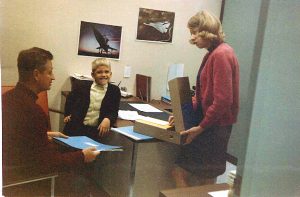
When I retired from my thirty-five year career in computers, I walked away from everything technical. I stopped thinking like a programmer and I became a user of computer services not a developer of them.
I was comfortable with this change in my life. The stresses of my job had totally burned me out. Moving from the suburbs to the country gave me many new things I could figure out how to do.
A few times I was tempted to return to the world of computers. These temptations came when a group I was part of needed a backup for its webmaster. So I would sort of volunteer. The current webmaster would explain the task to me and then I would lose interest. It wasn’t that I didn’t understand how to do the job, I did. It was that I was uncomfortable in the environment as I’d retired just as the internet was becoming a business tool.
But then in late 2015 I was introduced to blogs as an author marketing tool. Suddenly maintaining a website stopped being an optional task. As an about to be published author I needed my own website.
Everything I read steered me to WordPress. It was easy to learn and by using it anyone could build their own website. Or at least that was the story being told.
My experience was different. I would stare that the screen for what seemed like hours, go back and look at the help information again, Google the problem I was having and sometimes make things work. I kept saying to myself, I must have missed the memo that explained the basics that aren’t written down anywhere. After a long time I had a basic web page. It had a title, a header picture, an “About” page and my first blog post.
It was a long way from a professional author’s website. I needed help.
I knew exactly what type of help would work best. WordPress is pretty basic. Sometimes you push a button, sometimes you type something into a field and sometime you drag and drop. However, when to do what and where wasn’t the least bit intuitive to me. I needed someone to stand at my shoulder and say push that button now. Enter “x” into that field now.
Fortunately about the time I’d decided what I needed, I discovered Bakerview Consulting. Barb Drozdowich claims she can teach anyone WordPress. Her motto is “Helping Authors, One at a Time.”
She was exactly what I needed. Even though she lives almost a thousand miles away and I don’t do Skype we set up an environment where she could say “push that button now.” And after a couple of sessions, I had a decent website. There were a few calls for help and enhancements but I was happy with the results and felt, at least for a while, I could manage on my own. Plus I had help to call on if I got in trouble.
A few weeks later when I had an idea on how to expand my website to include book reviews, I didn’t call Barb. I did the work myself and sent her a note to check out my improvement. Her response was a suggestion on how to do it to drastically reduce the maintenance needed. It was a much better approach so I tore out all my work and implemented her suggestion.
About this time I was having a problem with the way WordPress works administratively. My first website had been a “wordpress.com” site and the website Barb helped me with was my current standalone site. Not knowing any better, I’d used the same email address for both websites. And even though I’d set up my Gravatar while creating my new website, WordPress had connected the Gravatar to my wordpress.com website. WordPress decided that the first website I set up must be the primary website and, according to Barb, there was no way to fix that. She offered a work-a-round which I added to my to-do list. The wrong website was only a problem when I was leaving comments on other blogs so fixing it wasn’t my highest priority.
Then one day another solution occurred to me. I only had a problem if someone went to my old website. What I needed was a way to direct them from my old website to my new one.
I knew how to do that. I changed the landing page on my old website from blog posts to a fixed landing page. I put in a message saying that this was my old website and set up an area to click to go to my new website. It was a trivial change to make in WordPress. But I was thrilled with myself. I had identified the problem and figured out how to use the commands tools at my disposal to solve it. I was thinking like a programmer again.
You might not think that someone like me with extensive programming experience would think of using WordPress features as programming. But you would be wrong. Having written code at the machine level, I knew that higher level languages like COBOL and C are removed from the code that device actually executes. WordPress functions are just further removed from the machine code.
It’s the way of thinking that counts. Clearly define the problem. Determine which commands (or features) will solve that problem. Establish the order for those commands (or features). Implement and test. Very straightforward if you think like a programmer.
If you have enjoyed this post please share it with others using the buttons below.
Please let me know of your experiences with ways of thinking by leaving a comment.
Leave a Reply